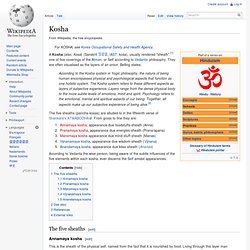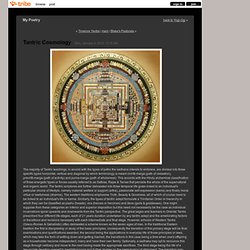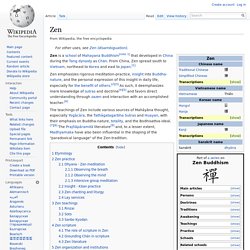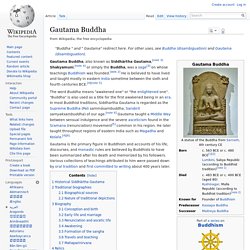

Jiddu Krishnamurti. Mythology - Birth Of Lord Ganesha. J.Krishnamurti on fear, part 1 of 2. 936Hz Pineal Gland Activator. Pineal gland. Bhagavad Gita. The Bhagavad Gita (Sanskrit: भगवद्गीता, bhagavad-gītā in IAST, Sanskrit pronunciation: [ˈbʱəɡəʋəd̪ ɡiːˈt̪aː]; lit.

"Song of the Lord"), referred to as simply the Gita, is a 700-verse Hindu scripture in Sanskrit that is part of the Hindu epic Mahabharata. The Gita is set in a narrative framework of a dialogue between Pandava prince Arjuna and his guide and charioteer Krishna. Facing the duty as a warrior to fight the Dharma Yudhha or righteous war between Pandavas and Kauravas, Arjuna is counselled by Krishna to "fulfill his Kshatriya (warrior) duty as a warrior and establishing Dharma. " Kosha. According to the Kosha system in Yogic philosophy, the nature of being human encompasses physical and psychological aspects that function as one holistic system.

The Kosha system refers to these different aspects as layers of subjective experience. Layers range from the dense physical body to the more subtle levels of emotions, mind and spirit. Psychology refers to the emotional, mental and spiritual aspects of our being. Together, all aspects make up our subjective experience of being alive.[2] The five sheaths (pancha-kosas) are alluded to in the fifteenth verse of Shankara's ATMABODHA. Annamaya kosha, appearance due foodstuffs-sheath (Anna)Pranamaya kosha, appearance due energies-sheath (Prana/apana)Manomaya kosha appearance due mind-stuff-sheath (Manas)Vijnanamaya kosha, appearance due wisdom-sheath (Vijnana)Anandamaya kosha, appearance due bliss-sheath (Ananda) The five sheaths[edit] Annamaya kosha[edit]
Ongoing. Sadhana. The historian N.

Bhattacharyya provides a working definition of the benefits of sādhanā as follows: Iyengar (1993: p. 22) in his English translation of and commentary to the Yoga Sutras of Patanjali defines sādhanā in relation to abhyāsa and kriyā: Sādhanā is a discipline undertaken in the pursuit of a goal. Abhyāsa is repeated practice performed with observation and reflection. Kriyā, or action, also implies perfect execution with study and investigation. Paths[edit] Anthony de Mello, an Indian Jesuit priest and founder of the Sadhana Institute in Pune, India, wrote a book of Christian meditations with the title Sadhana: A way to God.
Traditionally in some Hindu and Buddhist traditions in order to embark on a specific path of sādhanā, firstly a guru may be required to give the necessary instructions. Anuttarayoga Tantra. Anuttarayoga Tantra (Sanskrit, Tibetan: bla na med pa'i rgyud),[1] often translated as Unexcelled Yoga Tantra or Highest Yoga Tantra, is a term used in Tibetan Buddhism in the categorization of esoteric tantric Indian Buddhist texts that constitute part of the Kangyur, or the 'translated words of the Buddha' in the Tibetan Buddhist canon.

In the classification of the Dzogchen system, used by the Nyingma, it is considered equivalent to the Mahayoga tantras.[3] The Dalai Lama XIV states: "old translation Dzogchen and new translation anuttarayoga tantra offer equivalent paths that can bring the practitioner to the same resultant state of Buddhahood".[4] Translation terminology[edit] Anuttarayoga Tantra literally means 'Unexcelled Union Continuity'. While the term is frequently translated as 'Highest Yoga Tantra' in English writings, this is not quite accurate. As scholar Isabelle Onians explains: "Yoginitantras are in the secondary literature often called Anuttarayoga.
Father Tantras[edit] Mandala. Mantra. The Om syllable is considered a mantra in its own right in Vedanta school of Hinduism.

In Tibet, many Buddhists carve mantras into rocks as a form of meditation. Mantra (Sanskrit मन्त्र) means a sacred utterance, numinous sound, or a syllable, word, phonemes, or group of words believed by some to have psychological and spiritual power.[2][3] Mantra may or may not be syntactic or have literal meaning; the spiritual value of mantra comes when it is audible, visible, or present in thought.[2][4] Earliest mantras were composed in Vedic times by Hindus in India, and those are at least 3000 years old.[5] Mantras are now found in various schools of Hinduism, Buddhism, Jainism and Sikhism.[3][6] Similar hymns, chants, compositions and concepts are found in Zoroastrianism,[7] Taoism, Christianity and elsewhere.[2] The use, structure, function, importance and types of mantras vary according to the school and philosophy of Hinduism and of Buddhism.
Etymology and origins[edit] Definition[edit] Gayatri. Tantric Cosmology. Mon, January 4, 2010 - 5:15 AM The majority of Tantric teachings, in accord with the types of paths the sadhana intends to embrace, are divided into three specific types horizontal, vertical and diagonal by which terminology is meant nivritti-marga (path of cessation), pravritti-marga (path of activity) and purna-marga (path of wholeness).

This accords with the Hindu alchemical classification of three energetic types or forces usually referred to as Sattvas, Rajas & Tamas that pervade the whole of the supernatural and organic world. The tantric scriptures are further delineated into three temporal life goals linked to an individual's particular choice of lifestyle, namely material welfare or support (artha), passionate self-expression (kama) and finally moral virtue or lawfulness (dharma). The western traditions emphasise Truth, Beauty & Goodness, all of which of course need to be linked to an individual's life or karma. I Universal Principles: 1. II Conditional Principles: 6. 7. 12. KRIYA YOGA & COBRA BREATH. Babaji's Tantric Kriya Yoga is one of the most powerful spiritual discipline available on the planet Earth.

It is dedicated to those who are willing to accelerate their spiritual awakening. Kriya represents a practical yoga technique. Chenrezik. Zen. Zen is a school of Mahayana Buddhism[note 1] that developed in China during the Tang dynasty as Chán.

From China, Zen spread south to Vietnam, northeast to Korea and east to Japan. How to Do the Cobra Breathing Exercise. Gautama Buddha. The word Buddha means "awakened one" or "the enlightened one".

"Buddha" is also used as a title for the first awakened being in an era. In most Buddhist traditions, Siddhartha Gautama is regarded as the Supreme Buddha (Pali sammāsambuddha, Sanskrit samyaksaṃbuddha) of our age. [note 6] Gautama taught a Middle Way between sensual indulgence and the severe asceticism found in the Sramana (renunciation) movement common in his region. He later taught throughout regions of eastern India such as Magadha and Kośala. Gautama is the primary figure in Buddhism and accounts of his life, discourses, and monastic rules are believed by Buddhists to have been summarized after his death and memorized by his followers.
Historical Siddhārtha Gautama[edit] Confucius. Confucius (551–479 BC)[1] was a Chinese teacher, editor, politician, and philosopher of the Spring and Autumn period of Chinese history.

Confucius is traditionally credited with having authored or edited many of the Chinese classic texts including all of the Five Classics, but modern scholars are cautious of attributing specific assertions to Confucius himself. Aphorisms concerning his teachings were compiled in the Analects, but only many years after his death. Confucius's principles had a basis in common Chinese tradition and belief. He championed strong family loyalty, ancestor worship, respect of elders by their children and of husbands by their wives. He also recommended family as a basis for ideal government. Names Within the Analects, he is often referred to simply as "the Master" (子 Zǐ). Background Biography. Vipassanā. Vipassanā (Pāli) or vipaśyanā (विपश्यना, Sanskrit; Chn. 觀 guān; Tib. ལྷག་མཐོང་, lhaktong; Wyl. lhag mthong) in the Buddhist tradition means insight into the true nature of reality.[1][2] Hrama. Tantra Paintings.
My Mother´s Garden & Music for Yoga, Reiki, Meditation & Relaxation. Healing the Body with Mindfulness of Breathing. This excerpt from a talk by Zen Master Thich Nhat Hanh explains how to use mindfulness of breathing to bring loving-kindness to our dear bodies. The physical effect of this can be truly remarkable. As Thây says, “You should really love your body. You should really take care of your body. Mindful breathing, with rest, can do miracles.
1000 Arms Dance. 101 Zen Stories. The Mandala. Mission - Surya Namaskar - Sun Salutation. Surya Namaskar or the Sun Salutation is a most complete series of postures. It is a very good exercise which takes only a few minutes to do and serves as a warm up routine before the practice of yoga asanas. It is one of the best home exercises requiring little space, only eight by three feet. Be sure to have enough space to lie down, and enough clearance to stretch the arms above the head while standing. Surya namaskar consists of a sequence of twelve postures performed continuously and combined with synchronized breathing.
Each position counteracts the preceding one producing a balance between flexions and extensions. These 12 exercises are 1 round of surya namaskar. A healthy person requires a minimum practice of 12 or 16 rounds of surya namaskar each day. Surya namaskar's sequence of postures is most scientific as it completes the circuit within the body. Osho (Bhagwan Shree Rajneesh) Chandra Mohan Jain (11 December 1931 – 19 January 1990), also known as Acharya Rajneesh from the 1960s onwards, as Bhagwan Shree Rajneesh ( Bedouin. Namaste.